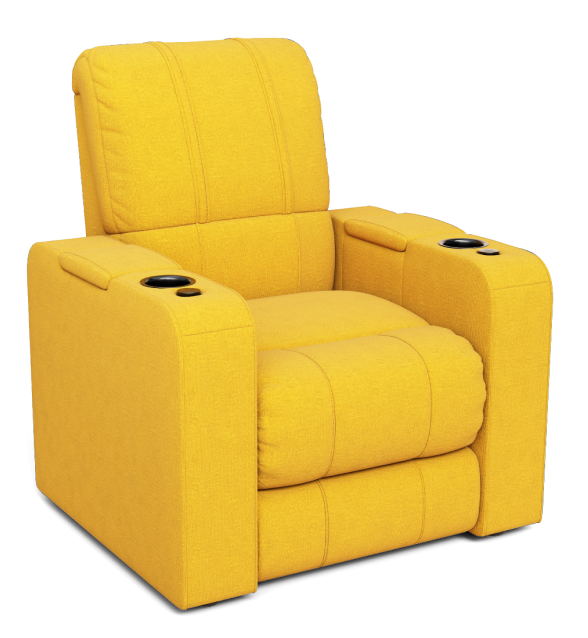Shopping online has recently become the world’s primary way to buy products. It saves the wait of standing in long lines at your favorite store, and often provides competitive prices – not to mention the effort and gasoline customers save. With such a strong combination of benefits, it’s no wonder that surfing the web for daily needs has become the ultimate solution for many shoppers. To be sure, the boom in the ecommerce sector has changed the way we shop. But, just as everything else, the world of online clothes shopping comes with some disadvantages, like finding clothes that fit! Despite all the efforts by ecommerce brands, there are a few problems that customers must consider when shopping online.
Pros of Shopping online:
- Increased Convenience
- Better Prices
- Abundant Variety
- Gift Sending Options
- Easy to Compare Prices
- No Waiting in Lines
- Privacy for Discreet Buying
Shopping for clothes and shoes online can be difficult, primarily because of sizing. Big retailers often fail to provide accurate sizes due to the use of across-the-board sizing charts, regardless of brand. Even more unfavorable than the inconsistencies with sizing is the need to make returns when consumers buy the wrong size. Although, you can’t completely avoid having to deal with returns or exchanges, with a little planning they can be reduced.
Everybody shops for clothes. By learning the following tips when shopping for yourself, you can implement these strategies to put yourself in your customers’ shoes and increase conversion!
Know Your Measurements
Knowing your usual clothing size may seem obvious, but many of us don’t know our exact bust, waist, and hip measurements. A lot of us generalize our measurements and are used to relying on inconsistent store sizes. These are subjective, however, and don’t tell much about our actual dimensions.
Below are step-by-step instructions on how to get your accurate measurements:
Bust: Using a measuring tape, take a loose measurement under the arms around the fullest part of the chest.
Waist: Measure the narrowest part of your waist, the area between the bottom of your ribs and the top of your hip bones. To ensure a comfy fit, do not pull the tape too snug.
Hips: Standing with your heels together, measure the fullest part of the body at the top of your legs about 7-9 inches below the natural waistline.
Inseam: With a measuring tape, measure a pair of pants that fit you the best from the top inner thigh to the base of the hemming.
Now that you know your measurements, the best way to find something that fits is to match your measurements to the size charts provided by the website. Below is an example of a size chart that can be found on most clothing websites.
Almost every ecommerce label has a segment of their webpage dedicated to sizing information. This information can be a lifesaver when you’re spending money on items you can’t try on. Don’t overlook it – explore it!
Make Notes of Brands, Retailers, and Designers You’ve Bought Before
There is no one size when it comes to how different brands size clothing. A piece of clothing that says “large” in one brand may be a “medium” in another. Once you’ve checked their respective sizing chart and found some brands that sell apparel in your size and choice of style, you’re in good shape to begin shopping.
Remember the name of the ecommerce brand you shopped with, especially if it’s from a designer or has a distinct cut or style. Though it may sound silly, keeping notes like this for clothes is essential.
When you decide on a brand, cut, or style that works for you, you’ll be able to locate it again quickly. You’ll automatically know that, although the sizing chart says you should be a size 12, this company’s size 14 fits you perfectly, and label sizes won’t be as important anymore.
Body Types: Know the Difference
For women’s clothes, some stores sell “misses” sizing, while others focus on “juniors.” It’s necessary to know the distinction between the two when online clothes shopping, as it will have a significant effect on the way apparel fits your body.
The “Misses” tag is denoted for sizing female’s clothing and uses even numbers to classify fits, such as 2, 4, 6, and 8. These apparels generally have more area in the bust and hips, so they fit well on an hourglass figure.
On the other hand, juniors’ clothing is categorized by odd numbers and has less space for the hips and bust. It’s better for minor frames and boyish shapes, and clothing is often designed with younger, more juvenile taste. You must always check the sizing before you buy.
Usually, women fall under one of the following body types: pear, apple, rectangle, inverted triangle, or hourglass. What may look good on an hourglass figure may not be flattering for a pear-shaped woman. It is important to consider how the cut of the clothing will fit over your specific body type.
The cut of clothing determines its shape. Fitting plays a significant role when it comes to pants or jeans. Their sizing depends on where the tops of the trousers sit and how it is tailored in the seat. Including the fit details are essential, and some sites classify or tag bottoms by fit just as they would the actual size.
Getting it right with shoes
One of the most crucial features of buying footwear online is getting the right size. Thus, it is essential to measure your foot and follow the size guide for every online purchase. For buying shoes, there are five types of sizes that are usually seen: UK, US, and EU sizes and measurements in both centimeters and inches.
When buying footwear that you will wear with socks, it is imperative to measure your feet with socks on. Wearing socks increases your foot size by about half an inch. Similarly, when you are trying on winter boots, ensure you put on thick socks that you are likely to wear with boots during winters. Socks can make a big difference in sizing.
Whenever possible, you should be clear about how a shoe fits in comparison to “true to size” fitting.
Sadly, most of the time manufacturers do not provide the best details. Reading customer reviews on sizing can help, as many shoppers rely on them to determine the exact size to buy. Use the reviews of others for insight on how the shoe might fit you.
You can look through all the comments to see any mention of the shoe running small or large, and even read over clothing forums on Google to get answers. Some consumers may not mention whether sizing was accurate. In this case, you can ask questions to collect this key information on sizing tips. This can not only help close more sales, but also help you locate problematic products that should be excluded from your store’s offerings.
Now Start *Shopping*
Using our sizing tips can help you take the perspective of the average customer when shopping for apparel. Accurate sizing measurements are essential not only to buy the right clothing but to sell it. When customers know they can trust you to provide accurate products, your conversions only increase. This is essential to succeeding as an online apparel retailer.
As you start shopping online, you will know more about your body measurements and understand which clothing styles and fits are most successful. Along with these sizing tips, online shopping experience will ultimately help you find clothes that suit you best.
Online shopping may require a little more research. But once you figure your go-to size at a few dependable places, you’ll be able to kiss brick-and-mortar stores good–bye for good. You might have to face some trial and error, but if you persevere and learn the return policy of each store, you’ll develop your online shopping skills in no time. This way, you’ll look great, and your pocket will too.



